The sky is a vast stage where birds perform aerial feats that defy gravity and showcase the power of evolution. Among these avian wonders, speed stands out as a critical survival trait, honed over millennia. When considering “What Is The Fastest Flying Bird,” we delve into a world of incredible adaptations and breathtaking velocities. From streamlined predators to agile migrators, the fastest birds are true masters of the air.
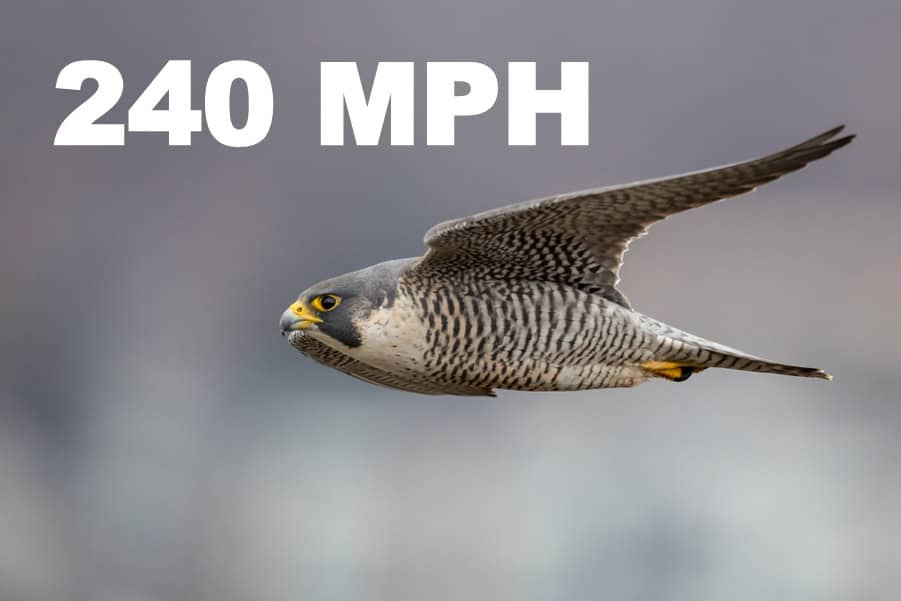 Peregrine falcon diving at high speed
Peregrine falcon diving at high speed
The Need for Speed: Why Birds Fly Fast
Speed is not just a spectacle in the bird world; it’s a fundamental aspect of survival and ecological success. For many birds, exceptional speed is crucial for hunting. Raptors like falcons and eagles rely on rapid dives and swift pursuits to capture prey. Conversely, smaller birds often need speed to evade predators, escaping the clutches of hawks or falcons themselves.
Beyond predator-prey dynamics, speed plays a vital role in migration. Many bird species undertake epic journeys across continents, and efficient, fast flight minimizes the time and energy spent in transit, reducing exposure to risks and maximizing breeding opportunities. Speed can also be important in territorial disputes and courtship displays, adding another layer to its ecological significance.
Aerodynamic Marvels: Adaptations for Fast Flight
Birds’ ability to achieve incredible speeds is a testament to millions of years of evolutionary refinement. Their bodies are finely tuned aerodynamic machines, showcasing a range of adaptations that minimize drag and maximize thrust.
One key adaptation is feather structure. The smooth, overlapping structure of feathers reduces air resistance, allowing for more efficient movement through the air. Fast-flying birds often have long, pointed wings, a shape that further minimizes drag and is optimized for high-speed flight. Think of the sleek wings of a falcon compared to the broader wings of a soaring bird like a vulture.
Muscle power is, of course, essential. The pectoral muscles, responsible for the powerful downstroke of the wings, are exceptionally well-developed in fast birds, providing the necessary force for rapid wingbeats. Furthermore, birds possess a unique respiratory system that ensures a continuous supply of oxygen to these hardworking muscles, crucial for sustained high-speed flight. Lightweight yet strong bones, often hollow, also contribute to reducing the overall weight burden, enabling faster and more agile movement.
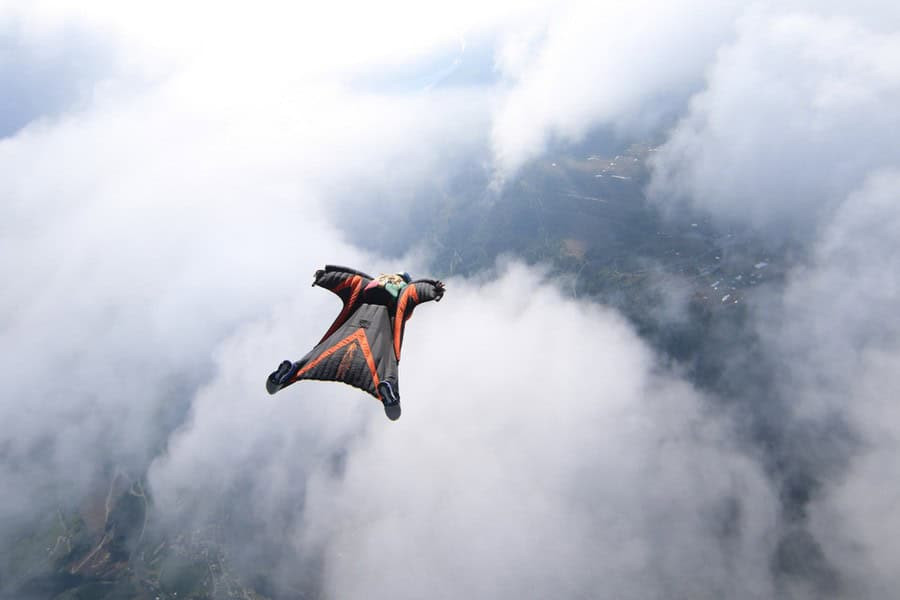 Bird wing anatomy and aerodynamic design for fast flight
Bird wing anatomy and aerodynamic design for fast flight
Top 15 Fastest Flying Birds in the World
Now, let’s dive into the list of the avian speed champions. These are the birds that top the charts when it comes to velocity in the sky.
1. Peregrine Falcon – The Dive Bomber King
Top Speed: 240 mph (386 kph)
The Peregrine Falcon isn’t just the fastest bird; it’s the fastest animal on Earth. However, it achieves this mind-blowing speed during its hunting stoop, a high-speed dive from incredible heights. Ascending to great altitudes, the Peregrine plummets towards its prey with astonishing acceleration, reaching speeds that can exceed 240 mph (386 kph). This dive is not just about speed; it’s a precisely controlled maneuver using its aerodynamic body, acute eyesight, and powerful physique to strike prey mid-air. Specialized nostrils help the falcon manage the immense airflow during these dives, preventing lung damage. Found across the globe, Peregrines are adaptable birds, thriving in urban landscapes as well as natural environments. Their diet mainly consists of medium-sized birds, which they dispatch with a swift strike during their high-speed stoop.
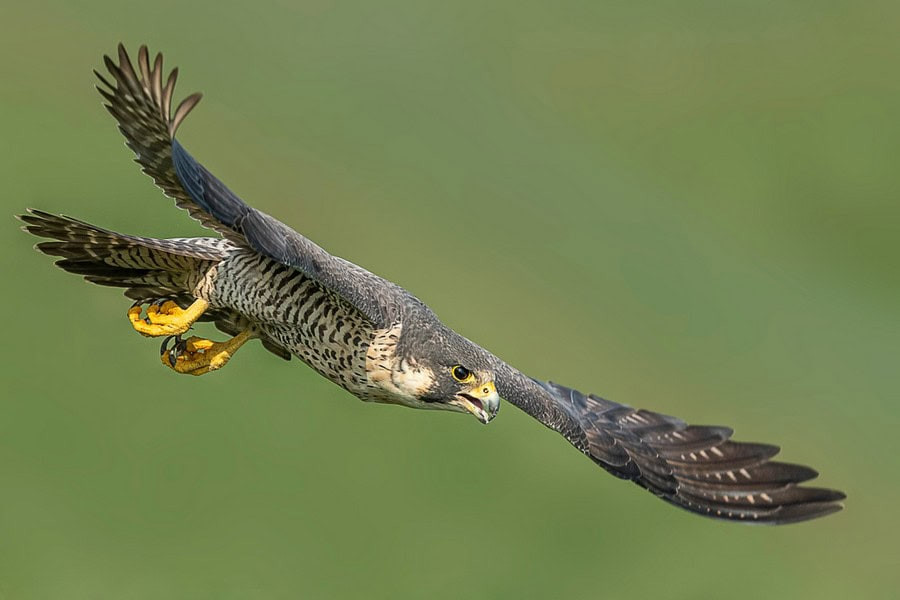 Peregrine falcon in hunting dive
Peregrine falcon in hunting dive
2. Golden Eagle – Majestic Speed and Power
Top Speed: 200 mph (322 kph)
The Golden Eagle, one of the largest and most powerful birds of prey, commands respect not only for its size but also its speed. With a wingspan reaching up to 7 feet (2.1 meters), this magnificent bird utilizes its speed to hunt mammals like rabbits and marmots. While not as fast as the Peregrine in a dive, the Golden Eagle can still reach speeds up to 200 mph (322 kph) when stooping. Its powerful talons, capable of exerting over 400 pounds per square inch of pressure, are formidable weapons for capturing and dispatching large prey. Golden Eagles are skilled soarers, using thermal currents to gain height and maintain speed efficiently while scanning the landscape with exceptional vision. They inhabit a wide range of environments across the Northern Hemisphere, from mountains to deserts.
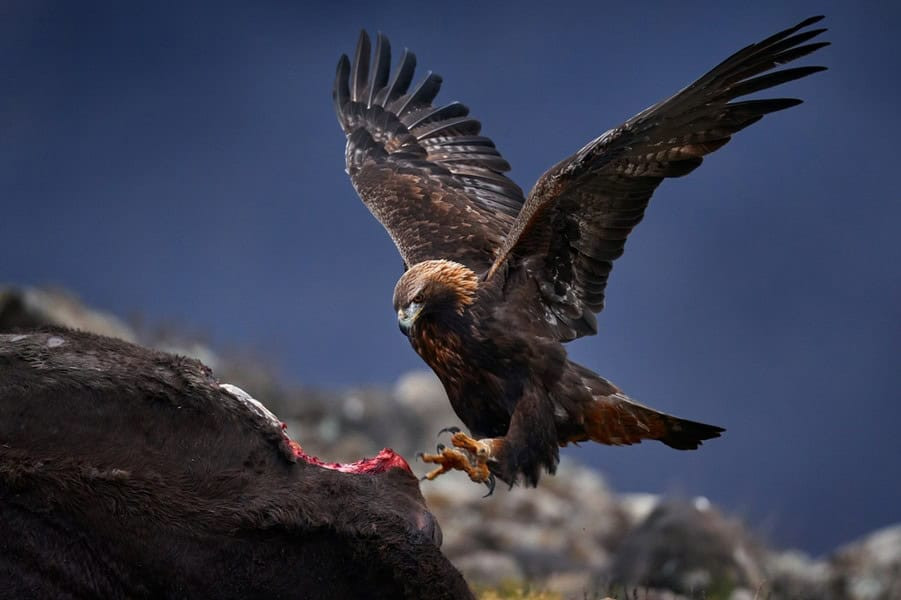 Golden eagle in flight
Golden eagle in flight
3. White-Throated Needletail Swift – Level Flight Champion
Top Speed: 105 mph (169 kph)
While falcons dominate in dives, the White-throated Needletail Swift claims the title of the fastest bird in level flight. Reaching speeds up to 105 mph (169 kph), this swift is built for sustained velocity. It spends almost its entire life airborne, feeding on insects caught on the wing. Its cigar-shaped body, robust build, and long, curved wings are perfectly engineered for rapid, continuous flight. The name “needletail” comes from the unique needle-like feather shafts at the tip of its tail. Found in Asia and Australia, these swifts undertake long migrations between breeding and wintering grounds. Remarkably, they are believed to be able to sleep on the wing, only landing to breed and raise their young.
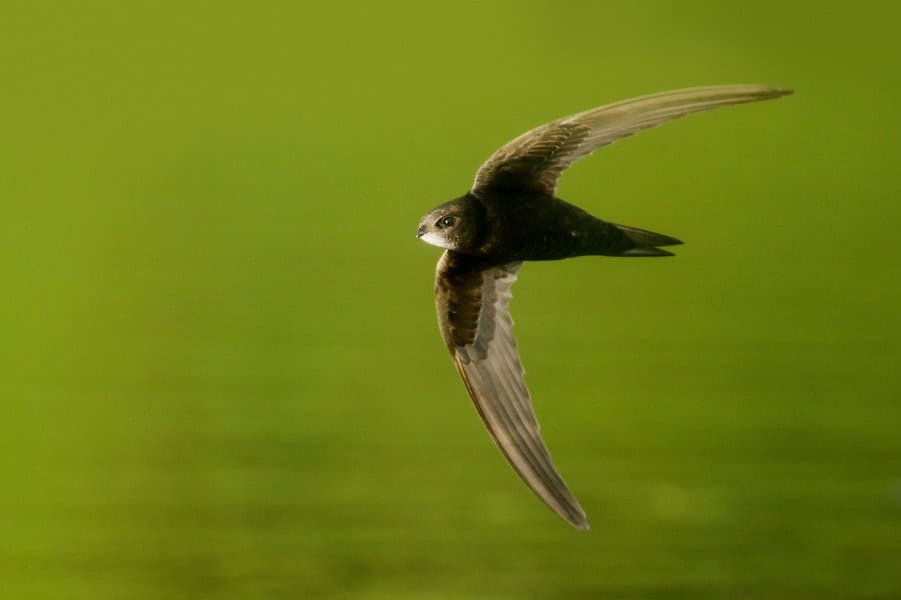 White-throated needletail swift in flight
White-throated needletail swift in flight
4. Eurasian Hobby – Aerial Acrobat
Top Speed: 100 mph (160 kph)
The Eurasian Hobby is a smaller falcon, but what it lacks in size, it more than makes up for in speed and agility. Capable of reaching 100 mph (160 kph), this slender falcon is an aerial acrobat, hunting insects and small birds with remarkable precision. Its speed and quickness make it a master of aerial pursuit, often seen chasing down dragonflies or smaller birds. The Eurasian Hobby is identifiable by its slate-grey upperparts and distinctive red markings on its legs, often referred to as “trousers”. Breeding across Europe and Asia, it migrates to Africa and southern Asia for the winter. Hobbies are often crepuscular hunters, active at dusk to take advantage of insect swarms, and are known to challenge even swifts and swallows in flight.
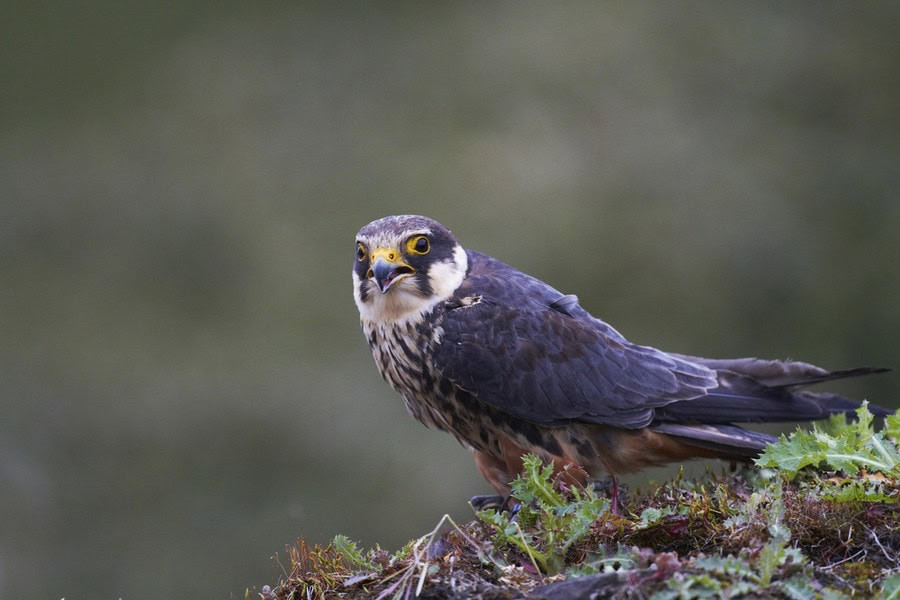 Eurasian hobby falcon in flight
Eurasian hobby falcon in flight
5. Bald Eagle – American Icon at Speed
Top Speed: 99 mph (160 kph)
The Bald Eagle, a symbol of the United States, is not just majestic in appearance; it’s also capable of impressive speed. While generally flying at slower speeds for soaring and scanning for prey, the Bald Eagle can reach up to 99 mph (160 kph) when diving towards fish or during territorial displays. With a massive wingspan of up to 8 feet (2.4 meters), it utilizes thermal currents to soar effortlessly, conserving energy while searching for fish and small mammals. Once endangered, conservation efforts have led to a significant recovery in Bald Eagle populations. They are known for building enormous nests, some weighing over a ton, which they often reuse and enlarge each year.
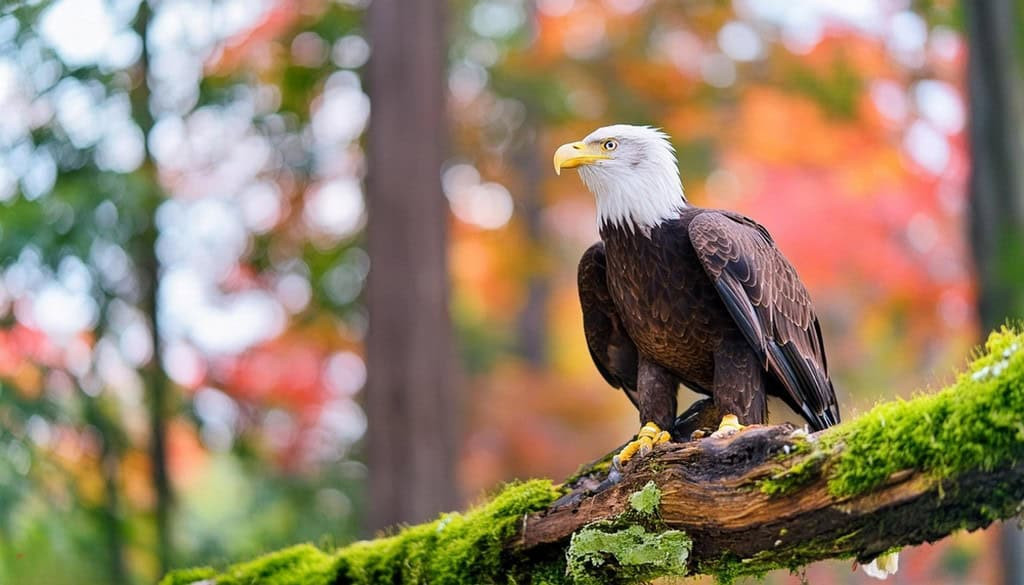 Bald eagle soaring
Bald eagle soaring
6. Frigatebird – The Pirate of the Skies
Top Speed: 95 mph (153 kph)
Frigatebirds are seabirds renowned for having the largest wingspan-to-body-weight ratio of any bird. This remarkable adaptation allows them to glide effortlessly and reach speeds up to 95 mph (153 kph). Known for their kleptoparasitic behavior, Frigatebirds often steal food from other birds in mid-flight, harassing them until they regurgitate their catch – earning them the nickname “pirate of the skies.” They possess long, hooked bills and a distinctive forked tail. Male Frigatebirds have a striking red gular pouch which they inflate during courtship displays to attract females. Found over tropical and subtropical oceans, they are pelagic birds, spending days and nights on the wing and only landing to breed or rest on remote islands.
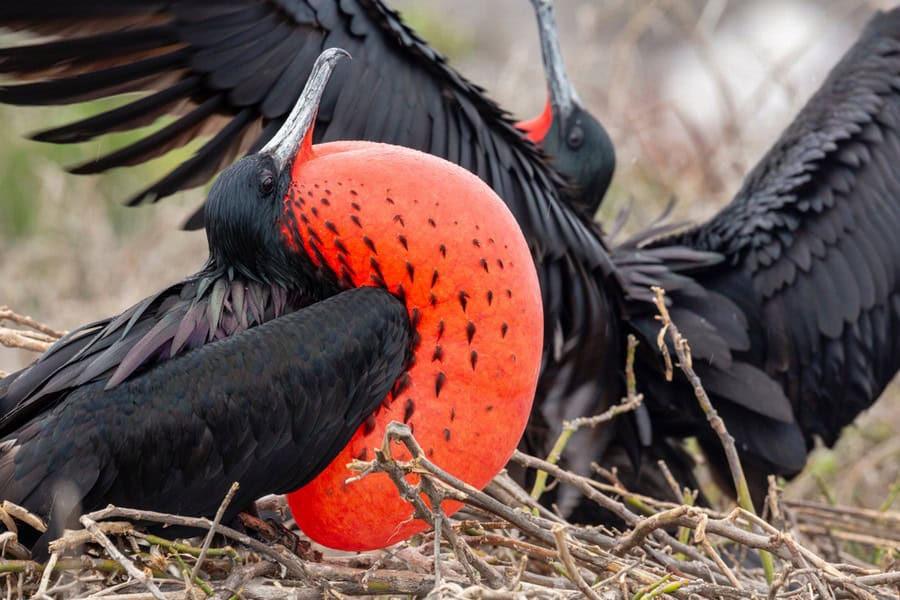 Frigatebird with inflated gular pouch
Frigatebird with inflated gular pouch
7. Rock Dove (Pigeon) – Urban Speedster
Top Speed: 93 mph (150 kph)
Often underestimated, the Rock Dove, commonly known as the pigeon, is surprisingly fast. Found in urban areas worldwide, pigeons can reach speeds up to 93 mph (150 kph). Their speed, combined with their remarkable homing ability, has been historically utilized by humans for message delivery, particularly in wartime communications. Rock Doves have a stout body and a short neck, with variable plumage but often displaying iridescent feathers on the neck and wings. Pigeons have been subjects of scientific research, contributing to studies on navigation, learning, and even genetics, including observations made by Charles Darwin in his work on natural selection.
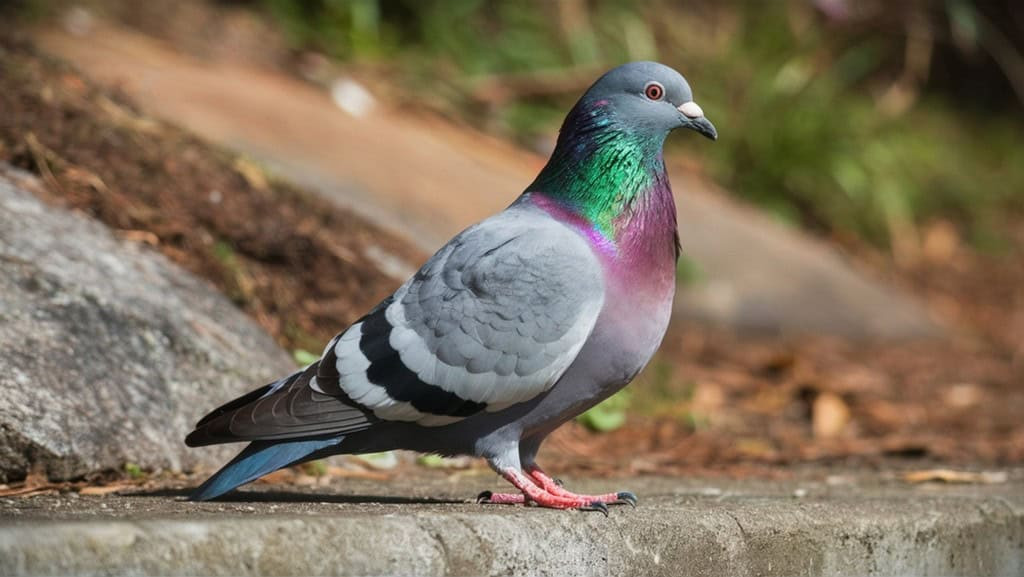 Rock dove (pigeon) in flight
Rock dove (pigeon) in flight
8. Gyrfalcon – Arctic Speed Hunter
Top Speed: 90 mph (145 kph)
The Gyrfalcon is the largest falcon species, inhabiting Arctic and sub-Arctic regions. It can achieve speeds up to 90 mph (145 kph) in level flight and even faster during hunting dives. Its powerful build and exceptional endurance enable it to pursue prey over long distances in the harsh, open environments of the far north. Gyrfalcons primarily prey on ptarmigan and seabirds, which they capture either in mid-air or on the ground. They exhibit a variety of color morphs, ranging from pure white to dark gray, providing camouflage against the snowy and rocky landscapes of their habitat. Historically, Gyrfalcons were highly prized in falconry by nobility due to their rarity, power, and hunting prowess.
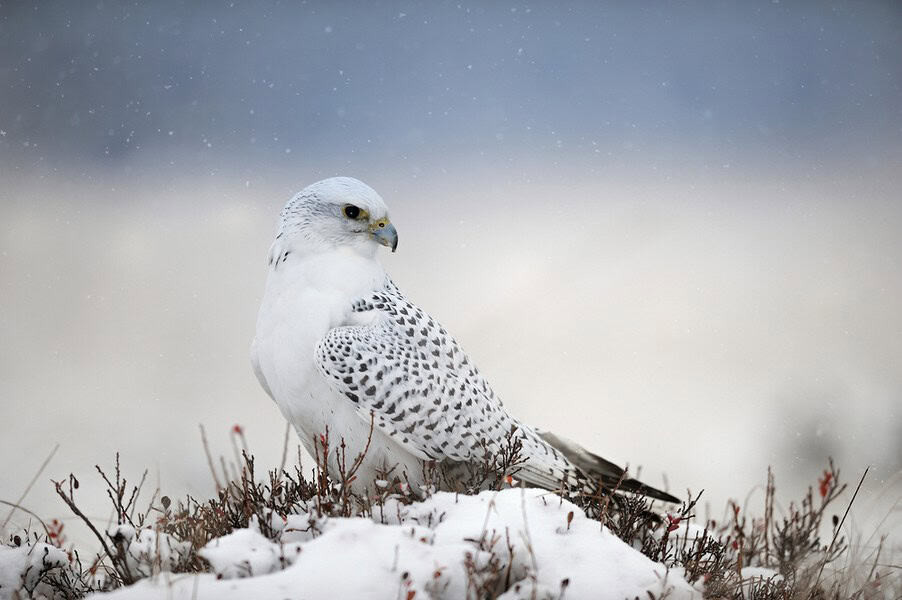 Gyrfalcon in arctic environment
Gyrfalcon in arctic environment
9. Spur-Winged Goose – Toxic Speed
Top Speed: 88 mph (142 kph)
The Spur-winged Goose is the largest waterfowl native to Africa, impressively reaching weights of up to 17 pounds (7.7 kilograms). Despite its size, it is capable of reaching flight speeds up to 88 mph (142 kph). Its powerful wings allow it to cover substantial distances between feeding and breeding areas. This goose is named for the sharp spurs on its wings, used for defense and dominance displays. Uniquely, it feeds on toxic blister beetles, accumulating cantharidin in its tissues, making its flesh poisonous to predators and even humans. Spur-winged Geese inhabit wetlands and grasslands across Africa, often forming large flocks outside of the breeding season.
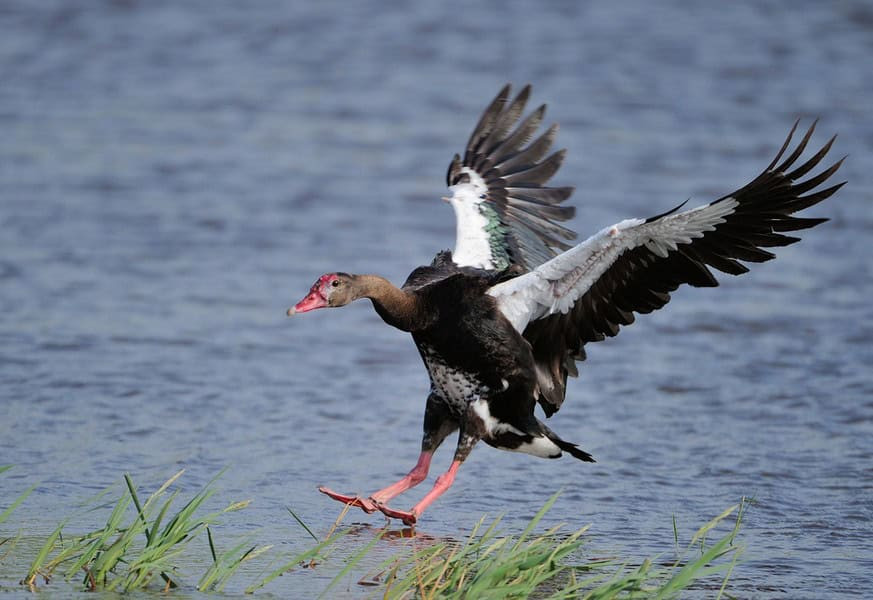 Spur-winged goose in flight
Spur-winged goose in flight
10. Red-Breasted Merganser – Aquatic Speedster
Top Speed: 81 mph (130 kph)
This diving duck, the Red-breasted Merganser, can reach speeds up to 81 mph (130 kph). Its slender body and rapid wingbeats are well-suited for swift flight over lakes and coastal waters. The Red-breasted Merganser is characterized by its distinctive spiky crest and a long, serrated bill, perfectly adapted for catching fish. It dives underwater to hunt, propelling itself with powerful webbed feet to pursue prey. Found across North America and Eurasia, it breeds in freshwater lakes and winters along coastlines. The Merganser’s ability to fly rapidly and swim efficiently makes it a versatile and successful hunter in aquatic environments.
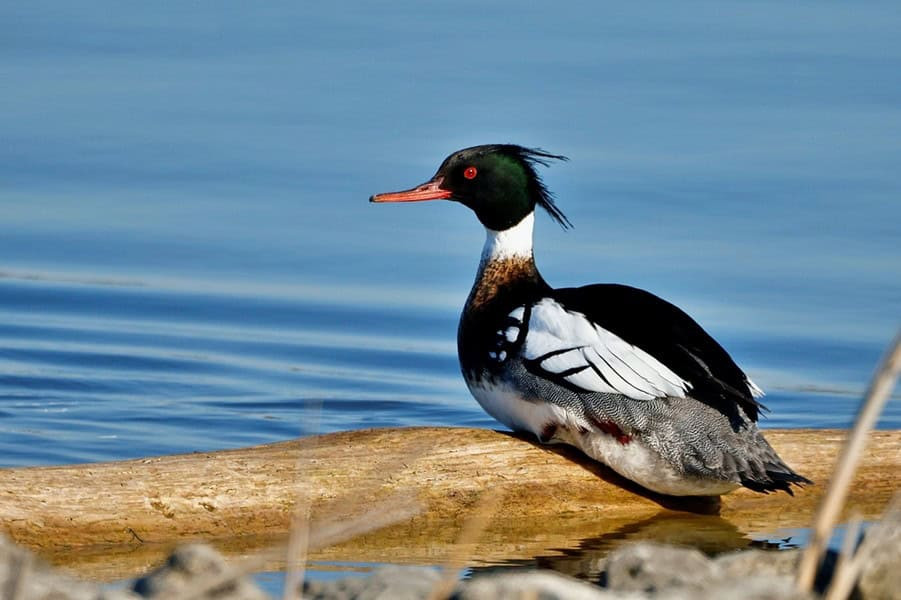 Red-breasted merganser swimming
Red-breasted merganser swimming
11. Grey-Headed Albatross – Ocean Cruiser
Top Speed: 79 mph (127 kph)
The Grey-headed Albatross is renowned for its incredible long-distance flights over the open ocean, reaching speeds of 79 mph (127 kph). It expertly utilizes dynamic soaring, exploiting wind gradients above the waves to travel vast distances with minimal energy expenditure. With a wingspan of around 7 feet (2.2 meters), it can glide for hours without flapping its wings. The albatross primarily feeds on squid and fish, often following ships to scavenge scraps. Breeding on remote sub-Antarctic islands, it nests on steep slopes and cliffs, undertaking incredible journeys across the oceans in search of food.
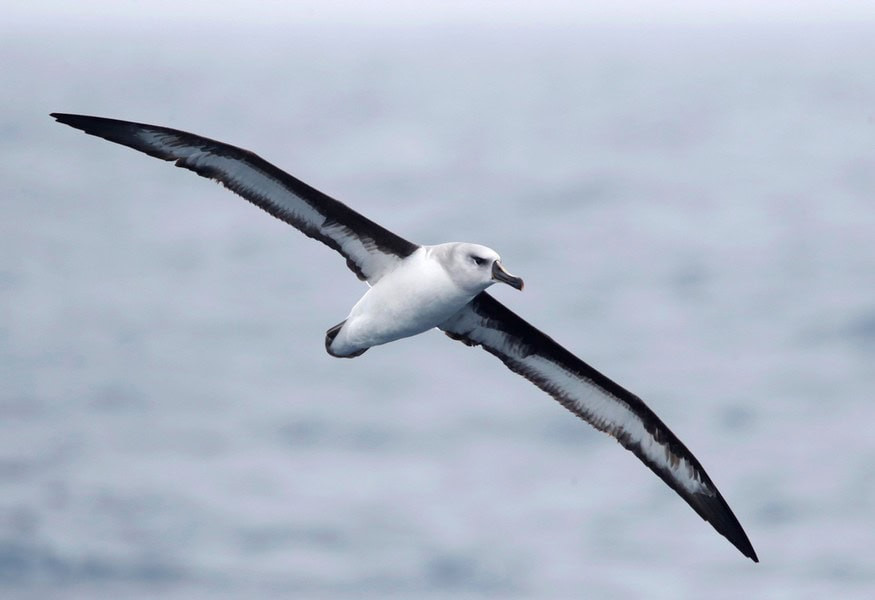 Grey-headed albatross soaring over ocean
Grey-headed albatross soaring over ocean
12. Canvasback – North American Duck Speedster
Top Speed: 73 mph (117 kph)
The Canvasback is a North American diving duck easily recognized by its long, sloping forehead and reddish-brown head in males. It achieves flight speeds of up to 73 mph (117 kph), thanks to its streamlined body and powerful wings. Canvasbacks breed in prairie potholes and marshes, favoring areas with abundant aquatic vegetation. They migrate to coastal bays and large lakes during winter, often forming large flocks. Their diet consists of tubers, seeds, and invertebrates, reflecting their preference for aquatic habitats.
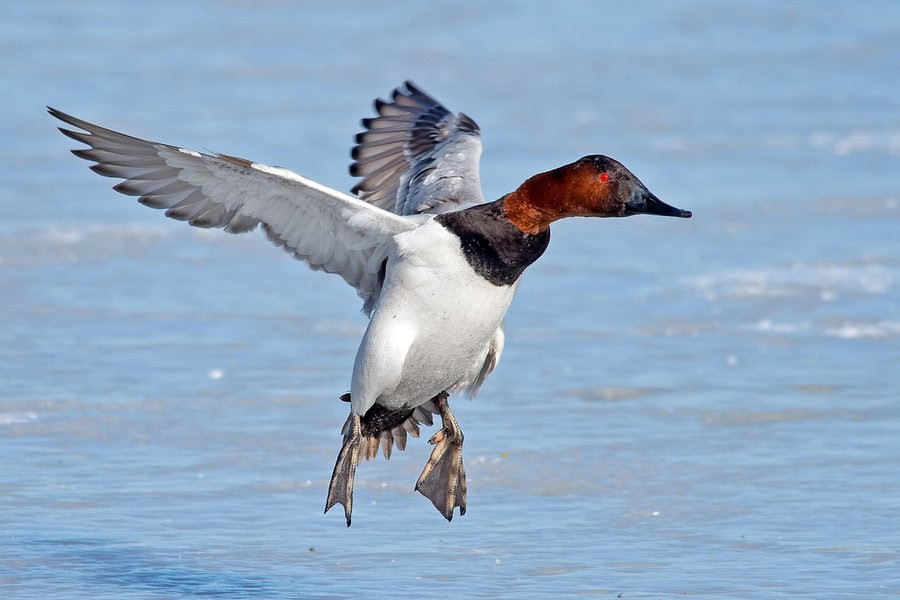 Canvasback duck in water
Canvasback duck in water
13. Mallard – The Ubiquitous Fast Flyer
Top Speed: 65 mph (105 kph)
The Mallard is a very common wild duck found throughout the Northern Hemisphere. Mallards are strong fliers, capable of reaching flight speeds of up to 65 mph (105 kph). They undertake long migrations, sometimes covering impressive distances in a single day. The male Mallard is easily identified by its glossy green head, white neck ring, and chestnut-brown chest, while the female exhibits mottled brown plumage for camouflage. They inhabit a wide variety of habitats, from wetlands and rivers to ponds and urban parks, demonstrating their adaptability. Mallards are omnivorous, feeding on seeds, aquatic vegetation, insects, and small fish. They are also the ancestors of most domestic duck breeds.
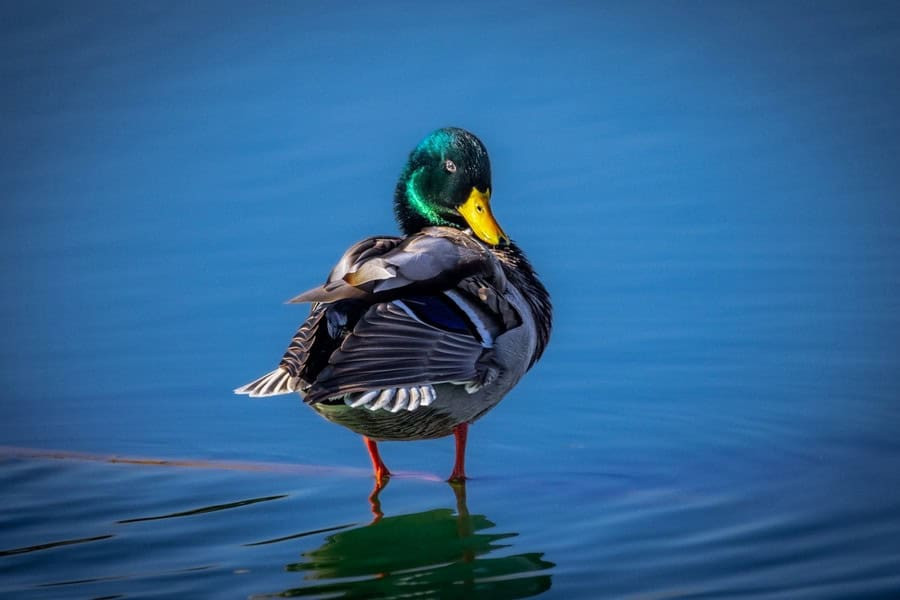 Mallard duck pair swimming
Mallard duck pair swimming
14. Anna’s Hummingbird – Tiny but Speedy
Top Speed: 61 mph (98 kph)
Anna’s Hummingbirds may be small, but they are incredibly fast, especially during their elaborate courtship displays. Males climb to heights of up to 130 feet (40 meters) before diving towards the ground at speeds reaching 61 mph (98 kph). Their wings beat at an astonishing rate, up to 80 times per second, enabling them to hover with precision and maneuver with incredible agility. Native to the western coast of North America, they are characterized by iridescent emerald feathers and a vibrant rose-pink throat patch called a gorget in males. These tiny birds feed on nectar and insects and, despite their size, are known to be territorial, aggressively defending their feeding areas.
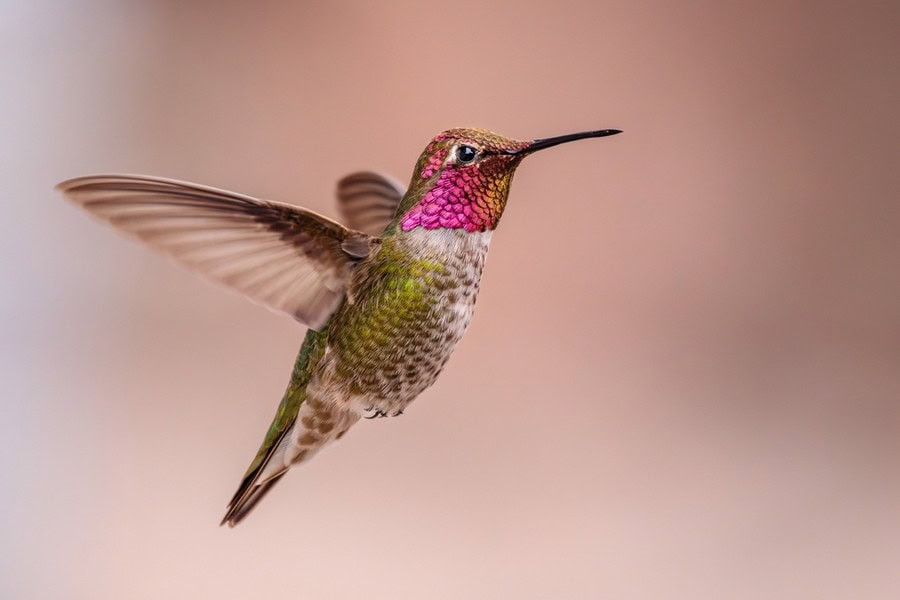 Anna's hummingbird feeding on nectar
Anna's hummingbird feeding on nectar
15. Great Snipe – Marathon Migrator
Top Speed: 60 mph (97 kph)
The Great Snipe is known for its remarkable migration speed and endurance. It flies non-stop over vast distances, migrating over 4,200 miles (6,760 kilometers) from northern Europe to sub-Saharan Africa at speeds around 60 mph (97 kph). Its rapid, direct flight strategy helps it minimize exposure to predators during these long and arduous journeys. The Great Snipe has a stocky build with cryptic plumage that provides excellent camouflage in marshy and grassland habitats. During the breeding season, males perform elaborate display flights and ground dances, accompanied by distinctive clicking and drumming sounds to attract females.
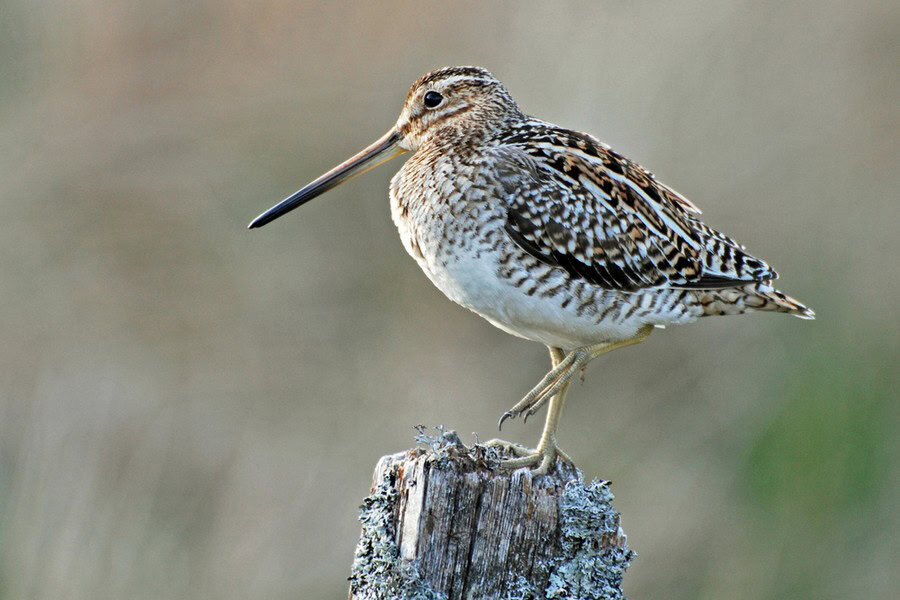 Great snipe in grassland habitat
Great snipe in grassland habitat
Prehistoric Flyers: Were Ancient Birds Faster?
The question of whether prehistoric birds were faster than their modern counterparts is a subject of ongoing scientific debate. Researchers often analyze the skeletal features of ancient birds, comparing them to modern species with known flight capabilities. Paleontologists utilize computer modeling to simulate possible flight patterns based on factors like weight, wingspan, and estimated muscle mass.
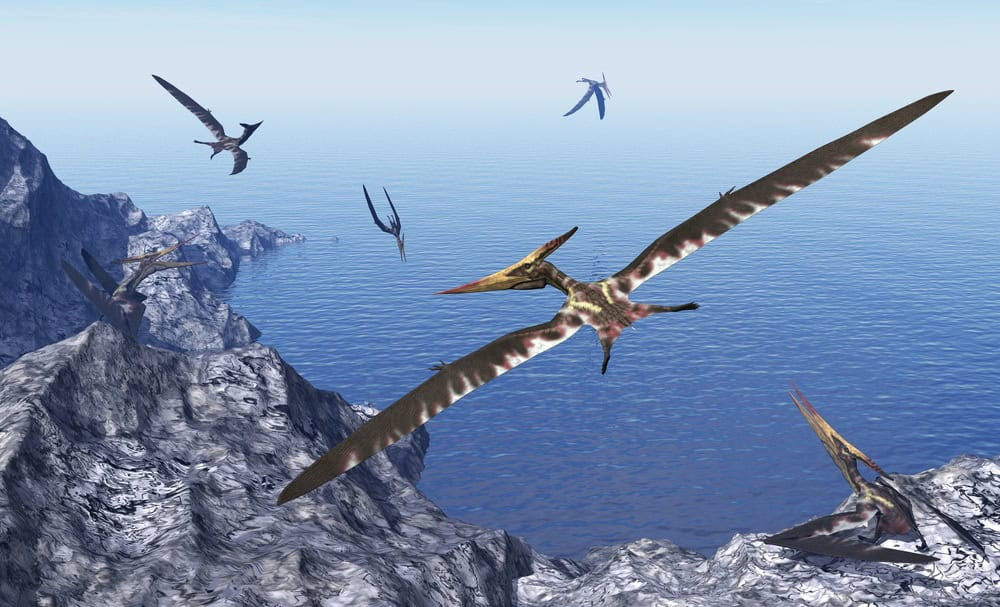 Fossil of prehistoric bird
Fossil of prehistoric bird
Current evidence suggests that while some prehistoric birds were giants in size, they were likely built for stable, sustained flight rather than extreme speed. The adaptations that enable modern birds to achieve such high velocities – compact bodies, specialized aerodynamic wing shapes, and lightweight bone structures – appear to be more refined in contemporary species. Large wings and heavier bones, often found in ancient birds, generally reduce potential top speeds. Over millions of years, evolution has favored traits that enhance speed in certain avian lineages, leading to the incredible velocities we see today. Therefore, most scientific interpretations indicate that prehistoric birds, even the largest ones, likely did not exceed the fastest speeds seen in modern raptors.
Conclusion: The Reign of Avian Speed
The world of birds is a testament to the power of adaptation, and the fastest flying birds are shining examples of this. From the breathtaking dives of the Peregrine Falcon to the sustained speed of the White-throated Needletail Swift, these avian speedsters showcase the diverse ways birds have conquered the skies. Understanding “what is the fastest flying bird” is not just about admiring speed; it’s about appreciating the intricate evolutionary processes that have shaped these incredible creatures and their roles in the ecosystems they inhabit. The sky truly is an arena of speed, and these birds are its undisputed champions.
